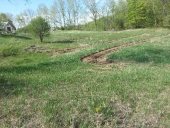What great information. Thomas, you have convinced me to move my rocket stove into the greenhouse and damn the loss of space. No amount of space compensates for frozen plants. Since my dad was an agronomist, I know about the day/night CO2 give and take. I doubt the greenhouse is quite that tight. That being said, I will run the exhaust back and forth under the plants but I won't be anal about small leaks. Is it important to run the exhaust pipes in a slightly upward direction to encourage draft or does the final vertical stack at the end of the run through the roof provide sufficient draw? You might enjoy the fact that I am reusing #10 steel cans as the pipe for the exhaust. I find that the new aluminum suretape works well to bind them together. I will use conventional stove pipe coming directly out of the barrel but expect the temps to have cooled enough to keep it safe. I also will be running the pipes in between some 55 gallon barrels of water as a heat sink. How important is it to insulate the floor under the exhaust pipes and barrels? I may just do that anyway to be sure. re: the hay. You make an excellent point. I have somewhat encased the bales in heavy plastic. I will check them for moisture as the winter progresses but it gets rather dry here at -15 F.

Ironically my family used to own a farm in VT where it was nothing but heavy blue clay. I may take my pickup truck down there next summer and try to beg some material from some house site. I would love to work some of that beloved ground into the project.
Thanks again for such a fine response to all my beginner's questions.









